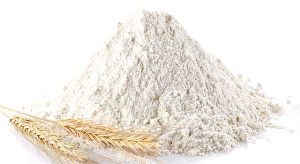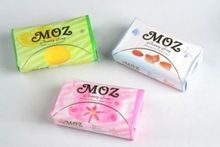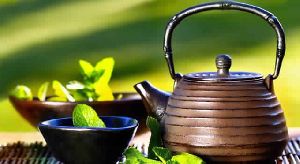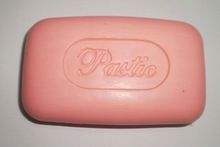
White Egg
Certification : Can be provided, if any required.
Shelf Life : 3-6 months

Wheat
Wheat is a cereal grain, originally from the Levant region of the Near East and Ethiopian Highlands, but now cultivated worldwide. In 2010 world production of wheat was 651 million tons, making it the third most-produced cereal after maize (844 million tons) and rice (672 million tons). In 2009, world production of wheat was 682 million tons, making it the second most-produced cereal after maize (817 million tons), and with rice as close third (679 million tons). This grain is grown on more land area than any other commercial crop and is the most important staple food for humans.World trade in wheat is greater than for all other crops combined. Globally, wheat is the leading source of vegetable protein in human food, having a higher protein content than either maize (corn) or rice, the other major cereals. In terms of total production tonnages used for food, it is currently second to rice as the main human food crop and ahead of maize, after allowing for maize's more extensive use in animal feeds.
...more
Toilet Soap
Ingredient : Herbal
Brand Name : MOZ
Type : Toilet Soap
Form : Solid
Age Group : Adults
...more
Tea
Tea is an aromatic beverage commonly prepared by pouring boiling hot water over cured leaves of the tea plant, Camellia sinensis.(Camellia sinensis is the species of plant whose leaves and leaf buds are used to produce the popular beverage tea) After water, tea is the most widely consumed beverage in the world. It has a cooling, slightly bitter, astringent flavour which many people enjoy. Tea catechins have known anti-inflammatory and neuroprotective activities, help to regulate food intake, and have an affinity for cannabinoid receptors, which may suppress pain and nausea, and provide calming effects.The cultivation and brewing of tea in India has a long history of applications in traditional systems of medicine and for consumption. However, commercial production of tea in India did not begin until the arrival of the British East India Company, at which point large tracts of land were converted for mass tea production.
...more
Sugar
Sugar is the generalised name for a class of sweet-flavored substances used as food. They are carbohydrates and as this name implies, are composed of carbon, hydrogen and oxygen. There are various types of sugar derived from different sources. Simple sugars are called monosaccharides and include glucose, fructose and galactose. The table or granulated sugar most customarily used as food is sucrose, a disaccharide. Other disaccharides include maltose and lactose.Sugars are found in the tissues of most plants but are only present in sufficient concentrations for efficient extraction in sugarcane and sugar beet. Sugarcane is a giant grass and has been cultivated in tropical climates in the Far East since ancient times. A great expansion in its production took place in the 18th century with the setting up of sugar plantations in the West Indies and Americas. This was the first time that sugar became available to the common people who had previously had to rely on honey to sweeten foods. Sugar beet is a root crop and is cultivated in cooler climates and became a major source of sugar in the 19th century when methods for extracting the sugar became available. Sugar production and trade has changed the course of human history in many ways. It influenced the formation of colonies, the perpetuation of slavery, the transition to indentured labour, the migration of peoples, wars between 19th century sugar trade controlling nations and the ethnic composition and political structure of the new world.
...more
Spices
A spice is a dried seed, fruit, root, bark, or vegetative substance primarily used for flavouring, colouring or preserving food.Sometimes a spice is used to hide other flavours.Spices are distinguished from herbs, which are parts of leafy green plants also used for flavouring or as garnish. Many spices have antimicrobial properties. This may explain why spices are more commonly used in warmer climates, which have more infectious disease, and why use of spices is especially prominent in meat, which is particularly susceptible to spoiling. A spice may have an extra use, usually medicinal, religious ritual, cosmetics or perfume production, or as a vegetable. For example, turmeric roots are consumed as a vegetable and garlic as an antibiotic.Spices include a variety of spices that are grown across the Indian subcontinent (South Asia). With different climates in different parts of the country, India produces a variety of spices, many of which are native to the Subcontinent, while others were imported from similar climates and have since been cultivated locally for centuries. Spices are typically heated in a pan with ghee or cooking oil before being added to a dish. Lighter spices are added last, and spices with strong flavor should be added first. Curry is not a spice, but a term which refers to any side dish in Indian cuisine. It could be with a gravy base or a dry item. A curry typically contains several spices blended together.
...more
Salt
Salt, also known as rock salt, is a crystalline(it refers to the degree of structural order in a solid) mineral that is composed primarily of sodium chloride (NaCl), a chemical compound belonging to the larger class of ionic salts. It is essential for animal life in small quantities, but is harmful to animals and plants in excess. Salt is one of the oldest, most ubiquitous food seasonings and salting is an important method of food preservation. The taste of salt (saltiness) is one of the basic human tastes.Salt for human consumption is produced in different forms: unrefined salt (such as sea salt), refined salt (table salt), and iodized salt. It is a crystalline solid, white, pale pink or light gray in color, normally obtained from sea water or rock deposits. Edible rock salts may be slightly grayish in color because of mineral content.
...more
1121 white sella Rice
Rice is the seed of the monocot plants Oryza sativa or Oryza glaberrima. As a cereal grain, it is the most important staple food for a large part of the world's human population, especially in Asia and the West Indies.There are many varieties of rice and culinary preferences tend to vary regionally. In the Far East there is a preference for softer, stickier varieties. Because of its importance as a staple food, rice has considerable cultural importance. Rice is often directly associated with prosperity and fertility, therefore there is the custom of throwing rice at weddings.The traditional method for cultivating rice is flooding the fields while, or after, setting the young seedlings. This simple method requires sound planning and servicing of the water damming and channeling, but reduces the growth of less robust and pest plants that have no submerged growth state, and deters vermin. While flooding is not mandatory for the cultivation of rice, all other methods of irrigation require higher effort in and pest control during growth periods and a different approach for fertilizing the soil.
...more
Pulses
A pulse is an annual leguminous crop yielding from one to twelve seeds of variable size, shape, and color within a pod. Pulses are used for food and animal feed. Archaeologists have discovered traces of pulse production around Ravi River (Punjab), the seat of the Indus Valley civilization, dating circa 3300 BC. Meanwhile, evidence of lentil cultivation has also been found in Egyptian pyramids and dry pea seeds have been discovered in a Swiss village that are believed to date back to the Stone Age. Archaeological evidence suggests that these peas must have been grown in the eastern Mediterranean and Mesopotamia regions at least 5,000 years ago and in Britain as early as the 11th century. The term "pulse", as used by the Food and Agricultural Organization (FAO), is reserved for crops harvested solely for the dry seed. This excludes green beans and green peas, which are considered vegetable crops. Also excluded are crops that are mainly grown for oil extraction (oilseeds like soybeans and peanuts), and crops which are used exclusively for sowing (clovers, alfalfa). However, in common use these distinctions are not clearly made, and many of the varieties so classified and given below are also used as vegetables, with their beans in pods while young; cooked in whole cuisines; and sold for the purpose; for example, black eyed beans, lima beans and Toor or pigeon peas are thus eaten as fresh green beans, or cooked as part of a meal. Pulses are important food crops due to their high protein and essential amino acid content. Like many leguminous crops, pulses play a key role in crop rotation due to their ability to fix nitrogen.
...more
Maize
Maize also known as Corn, is a grain domesticated by indigenous peoples in Mesoamerica in prehistoric times. The leafy stalk produces ears which contain seeds called kernels. Maize spread to the rest of the world because of its ability to grow in diverse climates. Sugar-rich varieties called sweet corn are usually grown for human consumption, while field corn varieties are used for animal feed and as chemical feedstocks.Types Of Maize Field / Animal Corn is used mainly to feed livestock, but it is also used for human consumption as well. Sweet Corn, the type most commonly eaten, is a genetic variation that accumulates more sugar and less starch in the kernels; it is usually shorter than field corn.Indian Corn was originally the term applied to what we now know as maize or corn, to differentiate it from the generic term of “corn” Europeans used for all grains at that time. Now, it usually refers to any corn that has different colored kernels.
...more
Fresh Eggs
Type : Egg
Part : White
Style : Fresh
...more
Detergent Powder
Brand Name : MOZ

Bathing Soap
Ingredient : Mineral
Form : Solid

Printed Packaging Box

cashew

Fruit Pulp
Be first to Rate
Rate This